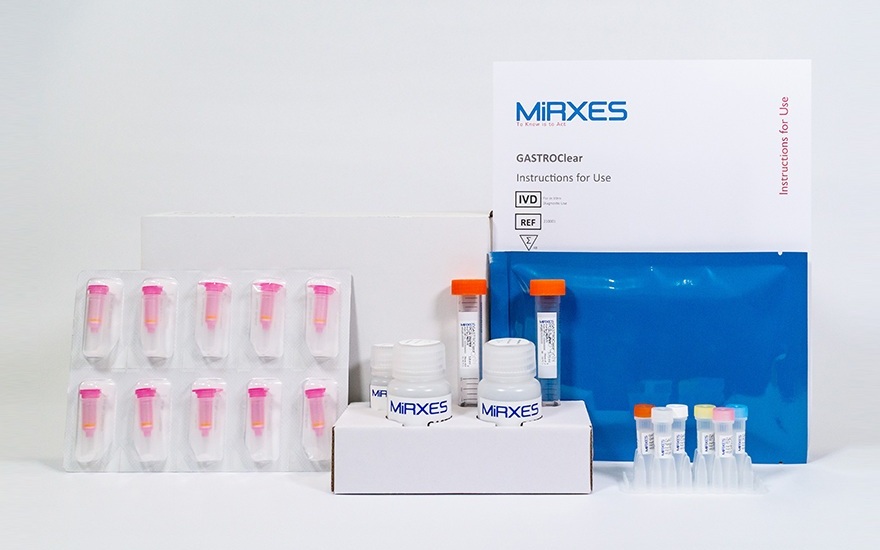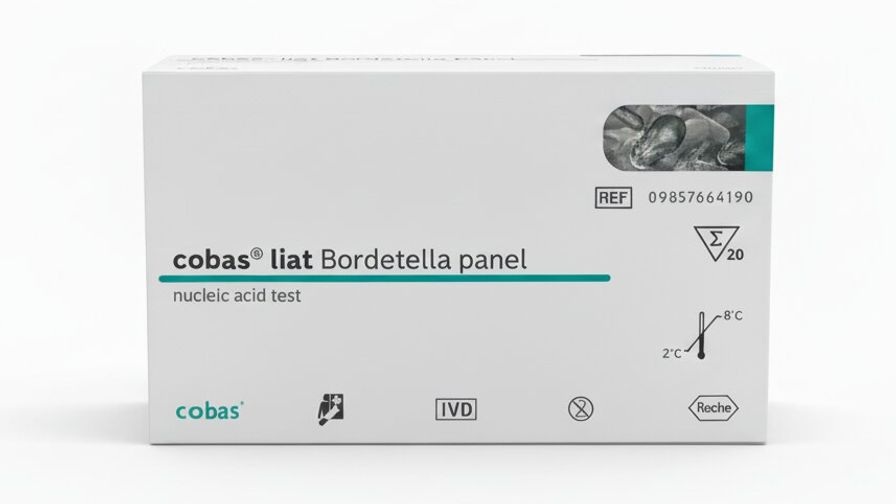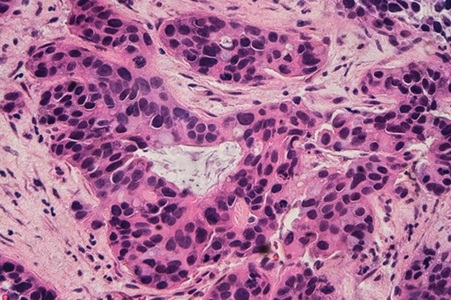New PCR Variants Evaluated for Global Diagnostics of Leishmaniasis
|
By LabMedica International staff writers Posted on 04 Nov 2014 |
![Image: Leishmania detection sensitivity – Percentage of positivity in the different hsp70-PCRs (G, F, N, C), evaluated in the total of 98 clinical pre-confirmed cutaneous or visceral leishmaniasis case samples (All) and in different subsets (Bone marrow, Blood/BC[buffy coat], Lymph node, Skin biopsy) (Phot courtesy of Montalvo et al., September 2014, and the journal Diagnostic Microbiology and Infectious Disease). Image: Leishmania detection sensitivity – Percentage of positivity in the different hsp70-PCRs (G, F, N, C), evaluated in the total of 98 clinical pre-confirmed cutaneous or visceral leishmaniasis case samples (All) and in different subsets (Bone marrow, Blood/BC[buffy coat], Lymph node, Skin biopsy) (Phot courtesy of Montalvo et al., September 2014, and the journal Diagnostic Microbiology and Infectious Disease).](https://globetechcdn.com/mobile_labmedica/images/stories/articles/article_images/2014-11-04/MMS-122.jpg)
Image: Leishmania detection sensitivity – Percentage of positivity in the different hsp70-PCRs (G, F, N, C), evaluated in the total of 98 clinical pre-confirmed cutaneous or visceral leishmaniasis case samples (All) and in different subsets (Bone marrow, Blood/BC[buffy coat], Lymph node, Skin biopsy) (Phot courtesy of Montalvo et al., September 2014, and the journal Diagnostic Microbiology and Infectious Disease).
A study of three new PCR variants based on the leishmanial hsp70 gene, evaluated directly on clinical samples, has demonstrated the new tools to be globally applicable for Leishmania species-level typing in various geographical, clinical, and sampling contexts.
In the diagnosis of leishmaniasis, identification of the causative Leishmania species is also important for treatment and prognosis, as well as for epidemiology (including documentation of sympatric and imported species), identification of new non-human reservoir hosts, and for establishing the link in cases of treatment failure. Three new PCR variants based on the hsp70 (heat-shock protein 70) gene had recently been developed and validated directly (without the need for culturing) on New World clinical samples from Peru.
Now, an international team, led by Prof. Gert Van der Auwera of the Institute of Tropical Medicine (ITM) at Antwerp (Belgium), has evaluated the performance of these PCRs on a set of 133 pre-confirmed positive or negative clinical samples (42 cutaneous and 56 visceral leishmaniasis patients, and 35 negative cases) – all from Old World countries: Italy, Sudan, Israel, and Tunisia. Samples were retrospective (had been previously collected) and included bone marrow, blood, buffy coat, lymph node aspirates, and lesion biopsies.
Results showed that the three new PCRs were more sensitive than those previously described for hsp70, and their respective restriction fragment length polymorphism (RFLP) analyses were more efficient for species identification. Also, in 79% of the confirmed positive samples, the species could be identified directly from original sample DNA.
The study described by Montalvo AM et al. in the September 2014, issue of the journal Diagnostic Microbiology and Infectious Disease suggests that these PCRs have potential for becoming a global reference method for identification of Leishmania species in clinical specimens.
Related Links:
Institute of Tropical Medicine (ITM) at Antwerp
In the diagnosis of leishmaniasis, identification of the causative Leishmania species is also important for treatment and prognosis, as well as for epidemiology (including documentation of sympatric and imported species), identification of new non-human reservoir hosts, and for establishing the link in cases of treatment failure. Three new PCR variants based on the hsp70 (heat-shock protein 70) gene had recently been developed and validated directly (without the need for culturing) on New World clinical samples from Peru.
Now, an international team, led by Prof. Gert Van der Auwera of the Institute of Tropical Medicine (ITM) at Antwerp (Belgium), has evaluated the performance of these PCRs on a set of 133 pre-confirmed positive or negative clinical samples (42 cutaneous and 56 visceral leishmaniasis patients, and 35 negative cases) – all from Old World countries: Italy, Sudan, Israel, and Tunisia. Samples were retrospective (had been previously collected) and included bone marrow, blood, buffy coat, lymph node aspirates, and lesion biopsies.
Results showed that the three new PCRs were more sensitive than those previously described for hsp70, and their respective restriction fragment length polymorphism (RFLP) analyses were more efficient for species identification. Also, in 79% of the confirmed positive samples, the species could be identified directly from original sample DNA.
The study described by Montalvo AM et al. in the September 2014, issue of the journal Diagnostic Microbiology and Infectious Disease suggests that these PCRs have potential for becoming a global reference method for identification of Leishmania species in clinical specimens.
Related Links:
Institute of Tropical Medicine (ITM) at Antwerp
Latest Microbiology News
- Rapid Assay Identifies Bloodstream Infection Pathogens Directly from Patient Samples
- Blood-Based Molecular Signatures to Enable Rapid EPTB Diagnosis
- 15-Minute Blood Test Diagnoses Life-Threatening Infections in Children
- High-Throughput Enteric Panels Detect Multiple GI Bacterial Infections from Single Stool Swab Sample
- Fast Noninvasive Bedside Test Uses Sugar Fingerprint to Detect Fungal Infections
- Rapid Sepsis Diagnostic Device to Enable Personalized Critical Care for ICU Patients
- Microfluidic Platform Assesses Neutrophil Function in Sepsis Patients
- New Diagnostic Method Confirms Sepsis Infections Earlier
- New Markers Could Predict Risk of Severe Chlamydia Infection
- Portable Spectroscopy Rapidly and Noninvasively Detects Bacterial Species in Vaginal Fluid
- CRISPR-Based Saliva Test Detects Tuberculosis Directly from Sputum
- Urine-Based Assay Diagnoses Common Lung Infection in Immunocompromised People
- Saliva Test Detects Implant-Related Microbial Risks
- New Platform Leverages AI and Quantum Computing to Predict Salmonella Antimicrobial Resistance
- Early Detection of Gut Microbiota Metabolite Linked to Atherosclerosis Could Revolutionize Diagnosis
- Viral Load Tests Can Help Predict Mpox Severity
Channels
Clinical Chemistry
view channel
Chemical Imaging Probe Could Track and Treat Prostate Cancer
Prostate cancer remains a leading cause of illness and death among men, with many patients eventually developing resistance to standard hormone-blocking therapies. These drugs often lose effectiveness... Read more
Mismatch Between Two Common Kidney Function Tests Indicates Serious Health Problems
Creatinine has long been the standard for measuring kidney filtration, while cystatin C — a protein produced by all human cells — has been recommended as a complementary marker because it is influenced... Read moreMolecular Diagnostics
view channel
First Of Its Kind Blood Test Detects Gastric Cancer in Asymptomatic Patients
Each year, over 1 million people worldwide are diagnosed with gastric (stomach) cancer, and over 800,000 people die of the disease. It is among the top 5 deadliest cancers worldwide for both men and women.... Read more
Portable Molecular Test Detects STIs at POC in 15 Minutes
Sexually transmitted infections (STIs) such as Chlamydia trachomatis and Neisseria gonorrhoeae affect more than 370 million people annually, with women in low- and middle-income countries facing the greatest... Read moreHematology
view channel
Platelet Activity Blood Test in Middle Age Could Identify Early Alzheimer’s Risk
Early detection of Alzheimer’s disease remains one of the biggest unmet needs in neurology, particularly because the biological changes underlying the disorder begin decades before memory symptoms appear.... Read more
Microvesicles Measurement Could Detect Vascular Injury in Sickle Cell Disease Patients
Assessing disease severity in sickle cell disease (SCD) remains challenging, especially when trying to predict hemolysis, vascular injury, and risk of complications such as vaso-occlusive crises.... Read more
ADLM’s New Coagulation Testing Guidance to Improve Care for Patients on Blood Thinners
Direct oral anticoagulants (DOACs) are one of the most common types of blood thinners. Patients take them to prevent a host of complications that could arise from blood clotting, including stroke, deep... Read moreImmunology
view channel
Gene Signature Test Predicts Response to Key Breast Cancer Treatment
DK4/6 inhibitors paired with hormone therapy have become a cornerstone treatment for advanced HR+/HER2– breast cancer, slowing tumor growth by blocking key proteins that drive cell division.... Read more
Chip Captures Cancer Cells from Blood to Help Select Right Breast Cancer Treatment
Ductal carcinoma in situ (DCIS) accounts for about a quarter of all breast cancer cases and generally carries a good prognosis. This non-invasive form of the disease may or may not become life-threatening.... Read morePathology
view channel
Diagnostic Technology Performs Rapid Biofluid Analysis Using Single Droplet
Diagnosing disease typically requires milliliters of blood drawn at clinics, depending on needles, laboratory infrastructure, and trained personnel. This process is often painful, resource-intensive, and... Read more
Novel Technology Tracks Hidden Cancer Cells Faster
Targeting and treating disease often hinges on the ability to locate specific cells inside the body—a challenge made difficult because harmful or therapeutic cells move through tissues and are not easily detected.... Read moreTechnology
view channel
AI Saliva Sensor Enables Early Detection of Head and Neck Cancer
Early detection of head and neck cancer remains difficult because the disease produces few or no symptoms in its earliest stages, and lesions often lie deep within the head or neck, where biopsy or endoscopy... Read more
AI-Powered Biosensor Technology to Enable Breath Test for Lung Cancer Detection
Detecting lung cancer early remains one of the biggest challenges in oncology, largely because current tools are invasive, expensive, or unable to identify the disease in its earliest phases.... Read moreIndustry
view channel
Abbott Acquires Cancer-Screening Company Exact Sciences
Abbott (Abbott Park, IL, USA) has entered into a definitive agreement to acquire Exact Sciences (Madison, WI, USA), enabling it to enter and lead in fast-growing cancer diagnostics segments.... Read more
























